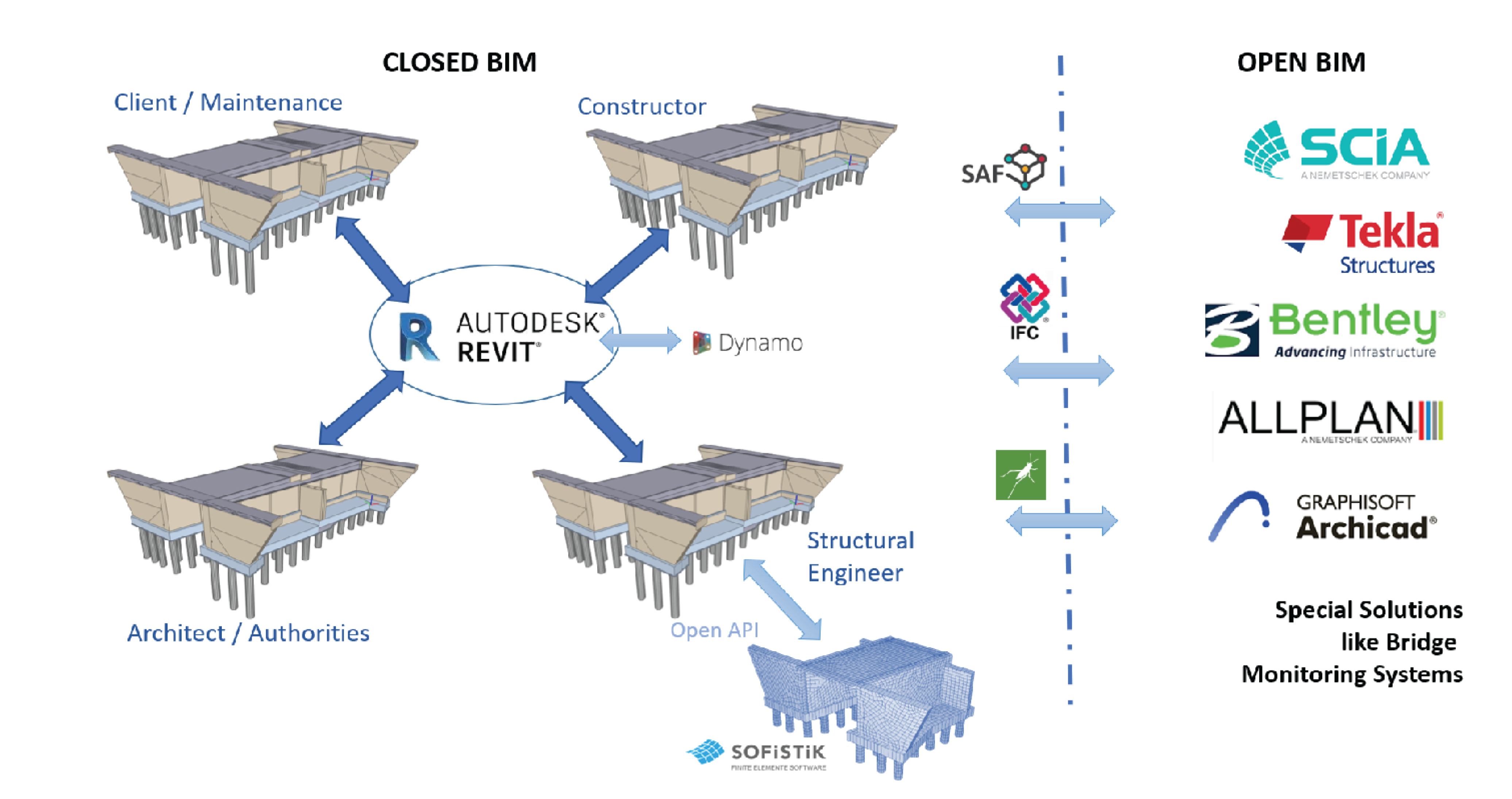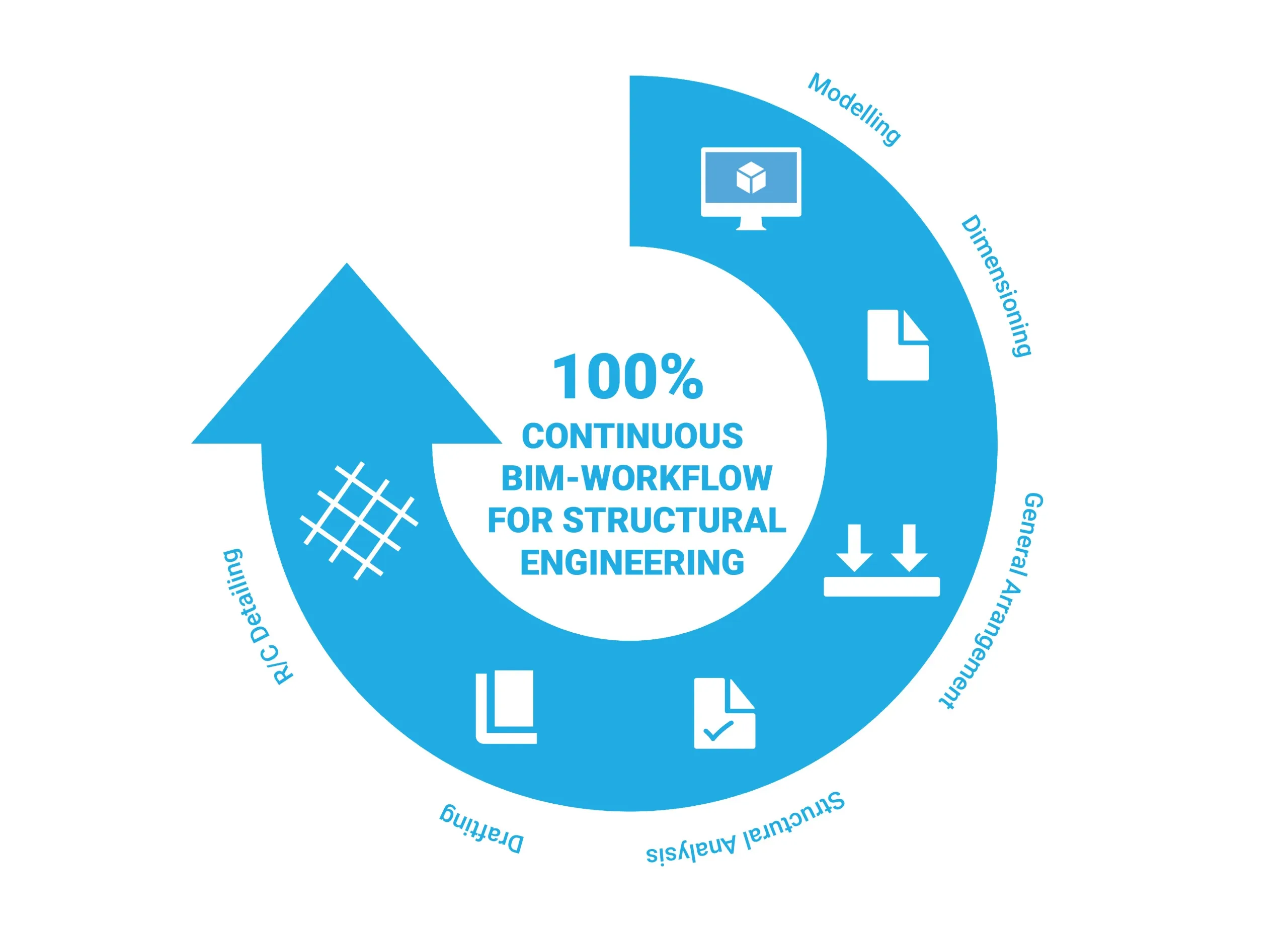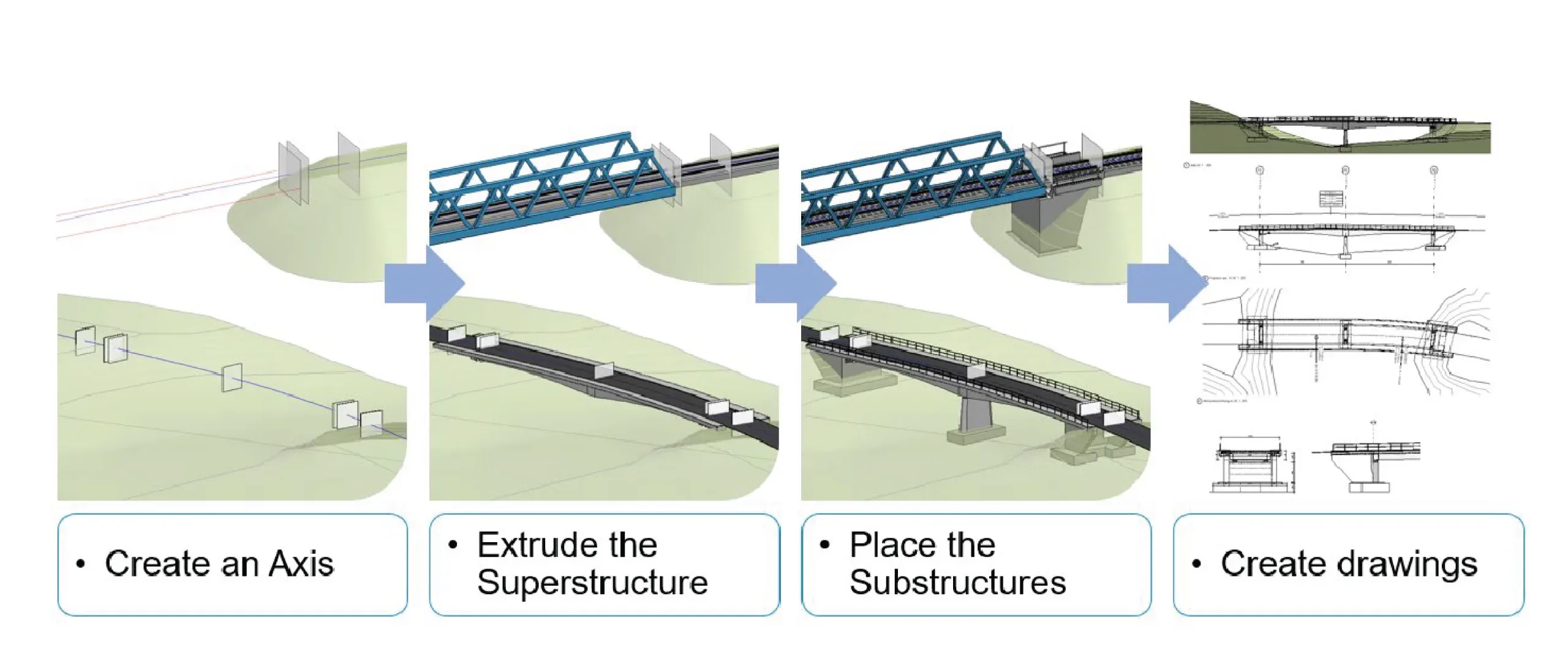
CLOSED BIM vs. OPEN BIM – What are the key differences?
In the rapidly evolving world of structural engineering, Building Information Modeling (BIM) has emerged as a game-changer. Two popular approaches to BIM, CLOSED BIM and OPEN BIM, offer distinct advantages. In this article, we will explore the key differences between CLOSED BIM and OPEN BIM, helping structural engineers make informed decisions about which approach suits their projects best.
What is CLOSED BIM?
CLOSED BIM, also known as “proprietary” or “single-platform” BIM, refers to a BIM environment where all project stakeholders work within a single, centralized software ecosystem. This means that the project data, models, and information are tightly controlled within a single software platform or suite of applications. CLOSED BIM environments are often characterized by a strong vertical integration of tools, meaning that a single software provider supplies all the necessary tools for the entire project lifecycle.
Benefits of CLOSED BIM
- Data Security: In CLOSED BIM, project data is stored and managed within a closed, secure system. This heightened level of security is essential for protecting sensitive project information, particularly in industries with stringent data privacy and compliance requirements.
- Interoperability: Since all project stakeholders work within a unified software ecosystem, there is often a high level of interoperability between different tools and software components. This ensures that data is seamlessly exchanged without the need for complex file conversions.
- Efficiency: CLOSED BIM can enhance efficiency by providing a streamlined workflow within a single software platform. Structural engineers can access all the tools they need without the need for exporting and importing data between various applications.
Limitations of CLOSED BIM
- Reduced Collaboration: While CLOSED BIM promotes efficiency, it can sometimes hinder collaboration between project stakeholders who prefer different software platforms. This can lead to communication challenges, especially in large, complex projects with diverse teams.
- Vendor Lock-In: CLOSED BIM often ties you to a specific software provider, limiting flexibility and potentially resulting in higher long-term costs. Changing software or integrating with external systems may be more complex within a CLOSED BIM environment.
Understanding OPEN BIM
OPEN BIM is not a specific software or tool; rather, it’s a collaborative way of working that places a premium on interoperability, data exchange, and flexibility. In OPEN BIM, multiple software applications and platforms can work together seamlessly. It allows project stakeholders, including architects, engineers, contractors, and owners, to collaborate in a shared digital environment without being tied to a single software ecosystem. This means that data is not locked within a proprietary system, ensuring a more open and flexible workflow.
Benefits of OPEN BIM:
- Enhanced Collaboration: OPEN BIM thrives on collaboration. It facilitates real-time information sharing among project stakeholders, regardless of the software tools they use. This open approach streamlines communication and leads to fewer errors, resulting in more efficient and cost-effective projects.
- Software Flexibility: With OPEN BIM, engineers can choose the software that best suits their specific project needs. This flexibility is invaluable when working with different clients, partners, or on projects with unique requirements. It ensures that the right tools are used for the job.
- Data Accessibility: OPEN BIM promotes the open exchange of data, which can be crucial for long-term project management and maintenance. Data is not trapped within a single software application, making it more accessible for future updates, renovations, or handovers to building owners.
- Reduced Costs: The collaborative and interoperable nature of OPEN BIM reduces the likelihood of expensive project delays or costly rework due to miscommunication. This can lead to significant cost savings over the life of a project.
Limitations of OPEN BIM:
- Data Management Challenges: Managing data across different software applications and platforms can be complex. Engineers need to be proficient in data exchange standards like IFC (Industry Foundation Classes) to ensure a smooth workflow.
- Training Requirements: Using OPEN BIM effectively may require training to ensure that team members can navigate and use multiple software tools efficiently.
- Coordination Effort: Collaboration in OPEN BIM requires close coordination and clear communication among all project stakeholders to ensure that everyone is aligned with the project’s goals and standards.
Comparing CLOSED and OPEN BIM in Structural Engineering
In the realm of structural engineering, we often distinguish between two approaches: CLOSED BIM and OPEN BIM. CLOSED BIM typically entails all project stakeholders working within a single BIM software platform, such as Autodesk Revit. This approach offers a distinct advantage in terms of efficiency and data sharing, as all project information resides within the same database on a common platform. This unified access to information and processes is particularly beneficial for clients, who can readily view project details.
However, the practical world doesn’t always align with the ideal. Structural engineers frequently find themselves dealing with diverse data formats from various project collaborators. Regrettably, a purely Closed (local) BIM workflow centered around a single software platform is not always feasible.
To address this challenge of data exchange across different software platforms, the concept of Open BIM has gained prominence over the years. Open BIM facilitates the exchange of data between different software databases, with the Industry Foundation Classes (IFC) format serving as one of its core components. This format, which has been in existence for several decades, is gaining significance with the support of the BuildingSMART association, a consortium of influential international engineering firms and software manufacturers. In addition to IFC, the Structural Analysis Format (SAF) has emerged, further enabling seamless integration of a BIM workflow without the need for a common database within a single software platform. This flexibility is crucial for effective BIM-based structural engineering.
Key Differences:
- Data Access: The fundamental distinction between CLOSED and OPEN BIM lies in data access. CLOSED BIM restricts data access to users of the proprietary software, while OPEN BIM allows for data sharing and access across various software platforms.
- Collaboration: CLOSED BIM may provide a more controlled environment, but it limits collaboration. Conversely, OPEN BIM encourages collaboration, albeit with a greater need for efficient data management to maintain order.
- Project Phases: The choice between CLOSED and OPEN BIM may also hinge on project phases. For early design and internal planning, CLOSED BIM’s data security can be an advantage. However, in later construction phases involving multiple stakeholders, OPEN BIM’s collaborative features may prove more suitable.

SOFiSTiK Approach:
SOFiSTiK’s FEA software solutions have always been receptive to diverse workflows. This inclusive approach is now extended to the BIM workflow, whether in Bridge Engineering or Building Design. The journey toward an Open BIM approach began years ago with an interface and an app for RHINO. Over time, the RHINO programming environment, known as GRASSHOPPER, has become a pivotal tool for connecting SOFiSTiK Finite Element (FE) models with TEKLA‘s BIM solution and other platforms.
The next step involves the direct integration of an IFC connector, allowing seamless import and export of databases from software solutions beyond the Autodesk ecosystem. Furthermore, the integration of the SAF format within the SOFiSTiK environment creates a new avenue for Open BIM solutions. Notably, SAF’s foundation in Excel ensures compatibility with various data exchange scenarios without compromising data integrity.
On the flip side, the integration of the BIM workflow for Building Design and Infrastructure Engineering in Revit offers a local BIM workflow within a single software environment. Development tools like DYNAMO within Revit enable further enhancement of routines in the Closed BIM setting.

SOFiSTiK Bridge and Infrastructural Modeler | SBIM:
The SOFiSTiK Bridge and Infrastructural Modeler, continuously refined since 2018 with input from customers, serves as an indispensable BIM solution for parametric infrastructural projects like bridges, tunnels, noise protection walls, retaining walls, and other structures. This solution leverages an axis definition, allowing infrastructure projects to be parametrically defined as native Revit objects and subsequently utilized in the complete local BIM workflow. This approach empowers the use of Revit in conceptual, preliminary, and detailed design phases for structures while seamlessly interfacing with SOFiSTiK’s FE analysis capabilities.

Conclusion
The choice between CLOSED and OPEN BIM hinges on the specific needs and phase of your project. CLOSED BIM offers data security and a streamlined environment, but at the cost of limited collaboration. OPEN BIM fosters flexibility and enhanced collaboration, but demands effective data management. SOFiSTiK’s open-minded approach empowers structural engineers with adaptable solutions, bridging the gap between proprietary and open systems. The future of structural engineering lies in balancing security with collaboration, and with the right tools, engineers can excel in both realms.

